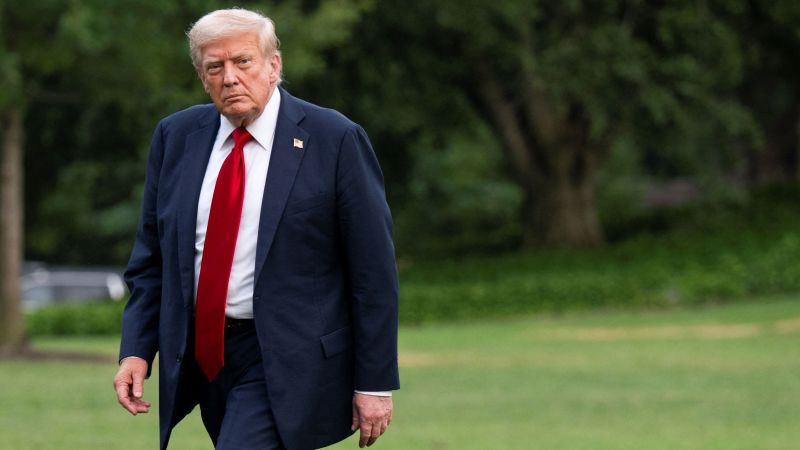President Donald Trump has garnered attention by escalating tariffs on several of America’s key trading partners, a bold move that has strangely resonated positively among various sectors, even amidst rising inflation rates impacting consumers. Trump has long focused his candidacy on alleviating the financial burdens faced by Americans, and while many economists have criticized his trade approach, claiming it could lead to increased expenses for businesses and consumers alike, the outcome thus far seems favorable for his administration.
The rationale behind Trump’s strategy appears to be rooted in a psychological approach. By setting the expectations for tariff penalties exceptionally high, any negotiated outcome that falls short of those expectations can be perceived as a success. This tactic of leveraging perceptions has drawn praise for its effective execution. Treasury Secretary Scott Bessent remarked that Trump has a knack for plotting strategies that may not always be transparent initially but tend to yield surprising gains for his administration.
For instance, Trump’s threats to impose a hefty 25% tariff on Japanese imports set the stage for a recent trade agreement that culminated in a significantly lower tariff of 15%. This agreement provided an immediate boost to markets in both the US and Japan, fostering a sense of optimism among investors. Despite the increase from a previous rate of 10% that had been in place since April, the market’s reaction was overwhelmingly positive, suggesting that stability and certainty in trade relations were primary drivers of investor confidence.
Analysts have noted that the clarity offered by these agreements has helped reduce uncertainty around trade-related tariffs, allowing businesses to strategize effectively. Peter Boockvar, the chief investment officer at One Point BFG Wealth Partners, emphasizes that the elimination of ambiguity regarding tariff rates enables businesses to plan more coherently, despite acknowledging the strange political and economic landscape shaped by Trump’s administration.
Nevertheless, the trade war is ongoing, and while the immediate repercussions may appear advantageous to Trump, the long-term effects of his tariff policies remain uncertain. It was during a critical period on April 9, when Trump opted to pause aggressive “Liberation Day” tariffs that had previously instigated market turmoil, that sentiment began shifting positively. Major market recovery ensued, paralleled by a rebound in consumer confidence. Several pivotal decisions, including the exclusion of specific electronics and smartphones from high tariffs, effectively contributed to the stock market’s resurgence.
Crucial trade agreements signed with various countries, including a revised deal with China to substantially lower tariffs, have added to a sense of stability in trade relations. In recent discussions, Trump and his administration have also taken aggressive stances regarding non-tariff barriers, such as digital service taxes imposed by nations like Canada, which they view as detrimental to American companies.
Despite some victories, the future still poses numerous uncertainties. With speculation about impending higher tariffs and a lack of significant trade agreements within the European Union, the potential ramifications might escalate tensions rather than resolve them. Moreover, while the US economy has largely absorbed the existing tariff impacts thus far, there are concerns that further increases, especially when combined with diminishing warehouse inventories of imported goods, could weaken the economy’s resilience.
Professional forecasts from economists suggest a cautious approach. Lynn Song, ING’s chief economist for Greater China, highlighted the ongoing developments in tariffs could exhibit long-lasting effects that remain unpredictable. While inflation is creeping upward and business sentiment shows gradual improvement, concerns persist over stagnant growth expectations and underlying vulnerabilities in the job market. The US dollar has notably weakened, reflective of broader concerns regarding potential economic downturns.
Market fluctuations signal that while current clarity around trade may offer temporary respite, the looming shadows of future instability are ever-present. Investors and consumers alike remain wary, as shifting trade policies and the uncertainty of upcoming tariff modifications could redefine the economic landscape. In essence, Trump’s trade maneuvers illustrate the complex interplay between bold policymaking and its unpredictable ramifications on both domestic and international stages.












